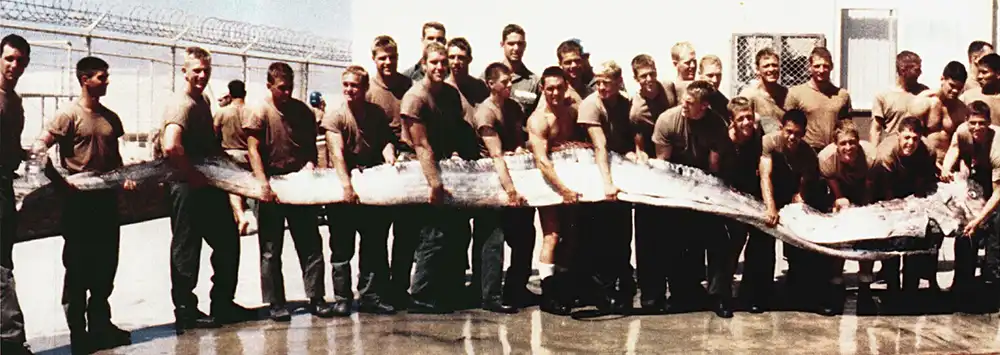
The subject of marine myths and sea serpent legends, the misnamed giant oarfish doesn’t actually row itself anywhere.
This giant oarfish (Regalecus glesne) is a pelagic lampriform (ray-finned fish) and the longest bony fish alive today. The largest ever recorded measured 11 metres in length – with unconfirmed reports of 17-metre specimens being found by fishermen.
Nicknamed ‘the king of herrings’, it lives at the epipelagic to mesopelagic ocean layers (between 200m to 1,000m). It is widely distributed across the worlds’s oceans and even has a presence in the Mediterranean Sea.
It is thought to be a relatively common fish, but is only rarely seen near the surface, when it is believed to be ill or dying.
The giant oarfish has a large, protruding mouth, no teeth, and the front section of its dorsal fin forms a trailing crest, lending weight to the belief it is the source of many sea serpent myths. It is also said to be a harbinger of natural calamities such as earthquakes and volcanic eruptions.

The first filmed sequence of an oarfish was by US Navy personnel working on a deep-sea buoy in the Bahamas in 2001. In 2016, a team filming an episode of the television series River Monsters captured an underwater encounter between the presenter Jeremy Wade and two healthy oarfish specimens near the surface off the Atlantic coast of France.
Until the giant oarfish was captured on film, it had previously been thought that it used its pelvic fins to ‘row’ itself through the water – hence the name ‘oarfish’.
The footage confirmed, however, that the fish propels itself by what is called amiiform swimming: that is, undulating its large dorsal fin while keeping its body straight.
More from DIVE’s Miscellany of Marine Curios:
- Marine Curios #14 – Kiwa hirsuta, or Yeti crab
- Marine Curios #13 – Marrus orthocanna, a pelagic siphonophore
- Marine Curios #12 – Clione limacina, or naked sea butterfly
- Marine Curios #11 – order Xiphosura, or horseshoe crabs
- Marine Curios #10 – Pseudocolochirus violaceus or sea apple
- The complete collection of DIVE’s Miscellany of Marine Curios


